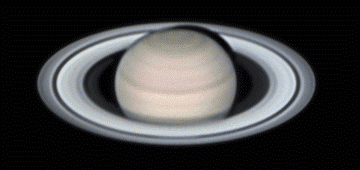 Did you miss last night's auroras? Next time get a wake-up call from Spaceweather PHONE.
Did you miss last night's auroras? Next time get a wake-up call from Spaceweather PHONE.
AURORA WATCH: A solar wind stream hit Earth last night, March 18th, sparking a geomagnetic storm and Northern Lights as far south as Michigan, Minnesota and Wisconsin in the United States: gallery. Earth is still inside the stream, which means more geomagnetic activity is possible tonight. Sky watchers should remain alert for auroras.

March 2006 Aurora Gallery
Above: "We saw a nice subtle show this evening," says photographer Sallie Carlson of Hinckley, Minnesota. "Not a lot of activity, but it was FUN to see lights again."
It's no coincidence that auroras are showing up now--on the eve of Northern Spring. History shows that the weeks around the equinoxes are often good times to catch Northern Lights. Why? Science@NASA has the answer.
SATURN'S RINGS: Saturn's rings are vanishing! No need to panic, it's happened before. As Saturn goes around the sun, it occasionally turns its rings edge-on to Earth. Because the rings are so thin, they disappear when viewed through a small telescope.
The next "ring plane crossing" isn't due until 2009. Already, though, we can see the process at work. Witness this 3-year animation assembled by Alan Friedman from pictures he has taken from his backyard in Buffalo, New York, between 2004 and 2006:

Animation credit: Alan Friedman and Richard Bosman
In the years ahead, Saturn's rings will become thinner and thinner until, on Sept. 4, 2009, they will briefly disappear. When this happened to Galileo in 1612, he temporarily abandoned his study of the planet. Big mistake: ring plane crossings are good times to discover new moons and faint outer rings.
You can see Saturn's rings with your own eyes. All you need is a backyard telescope; even a small one will do. Go outside after sunset, face south and look up. Saturn is the bright yellow "star" almost straight overhead: sky map.

